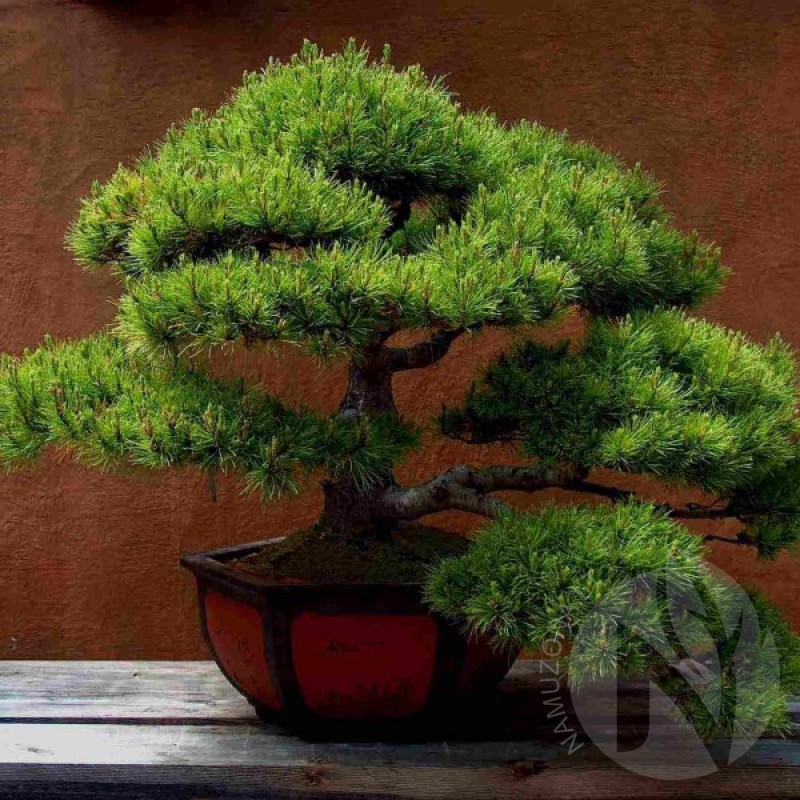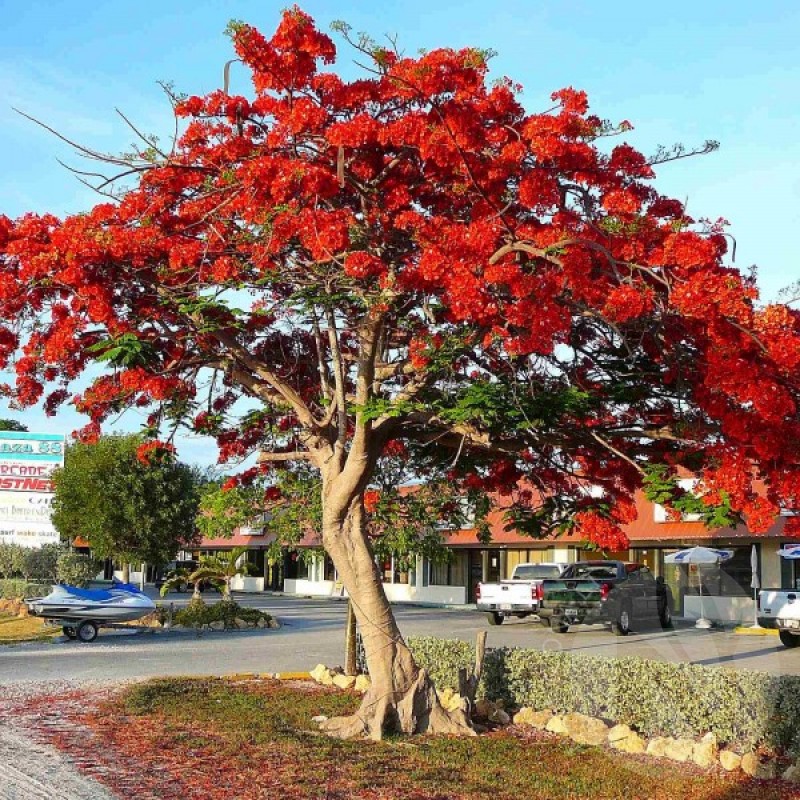
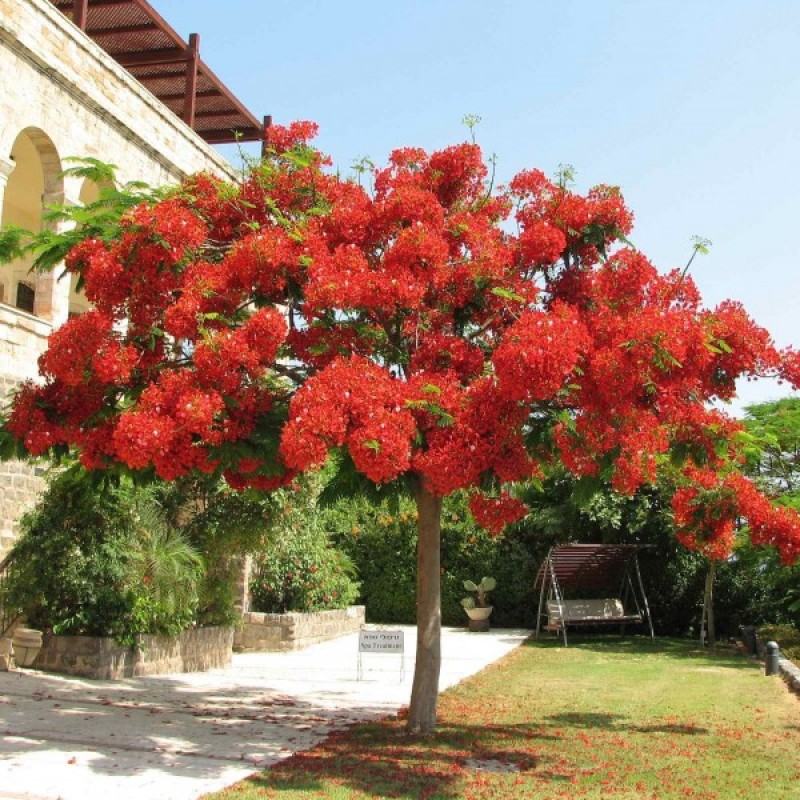
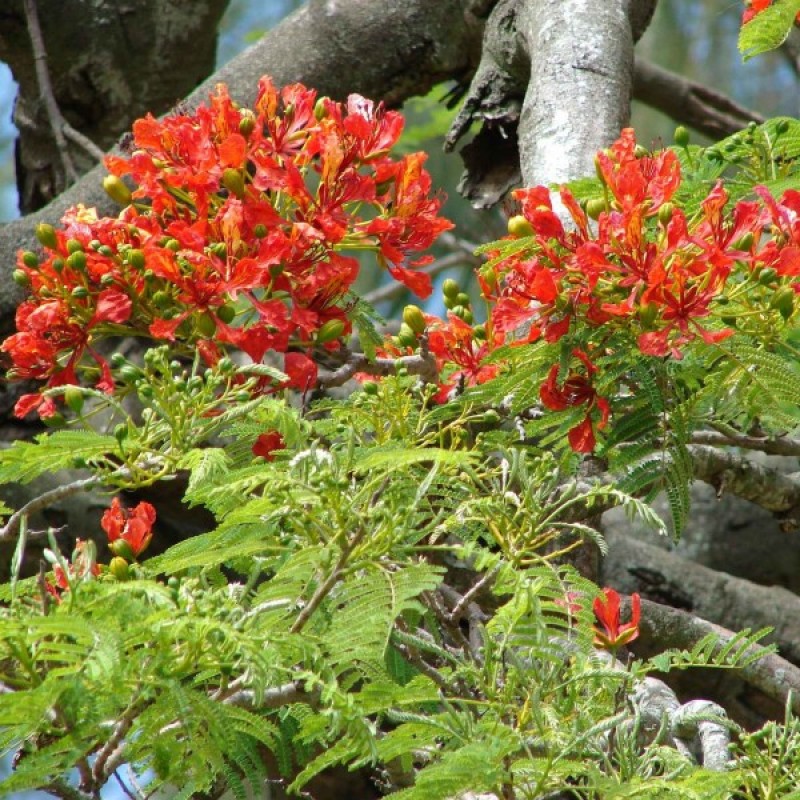
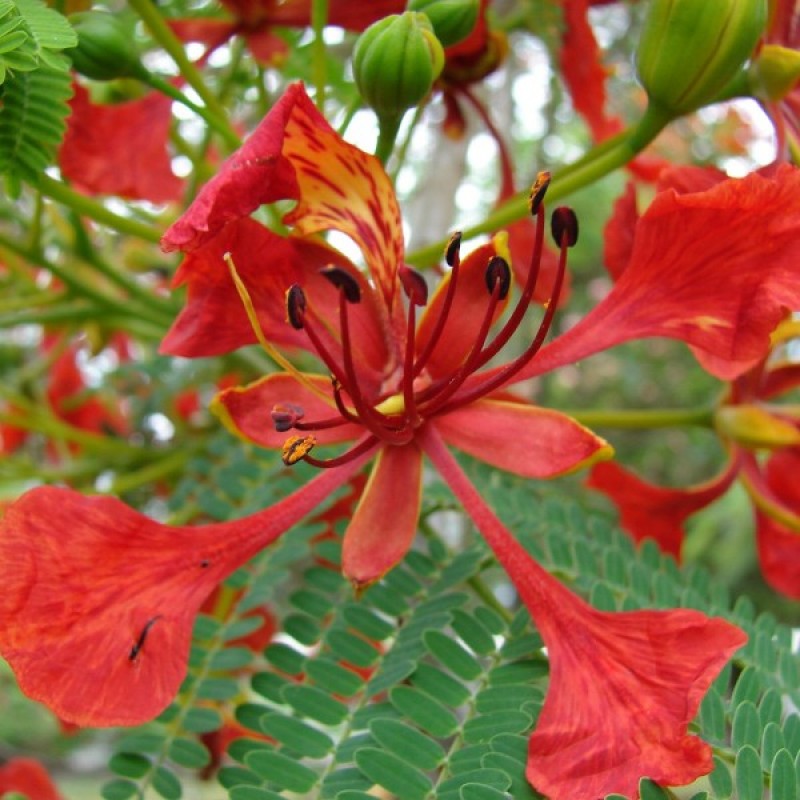
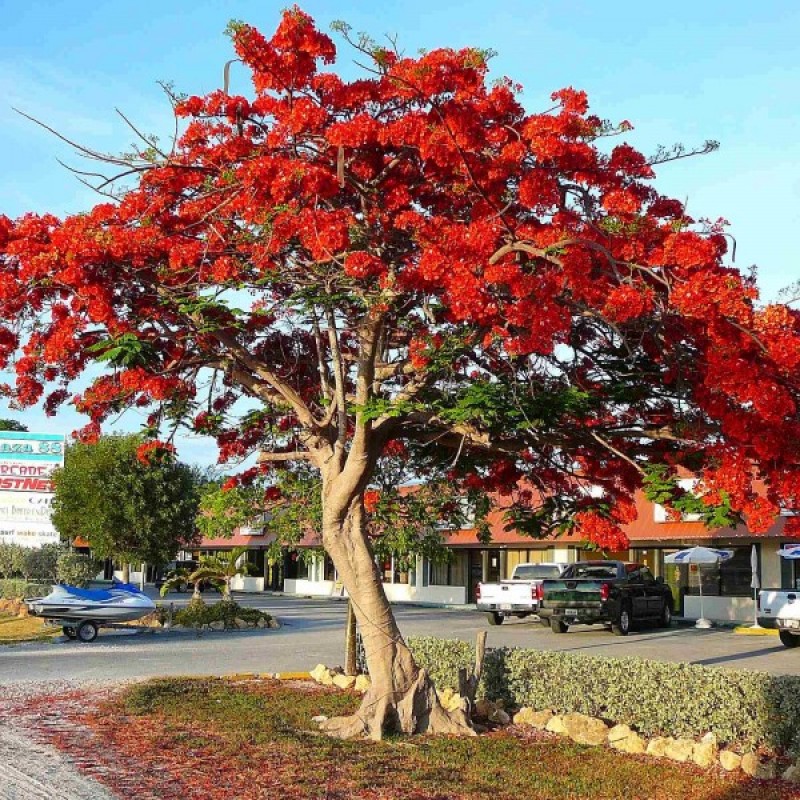
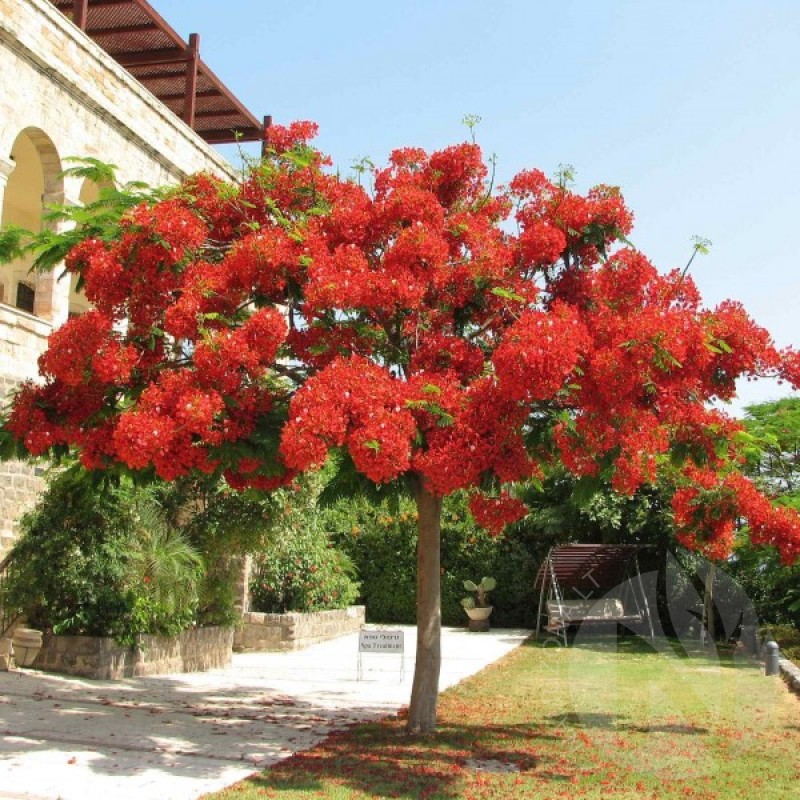
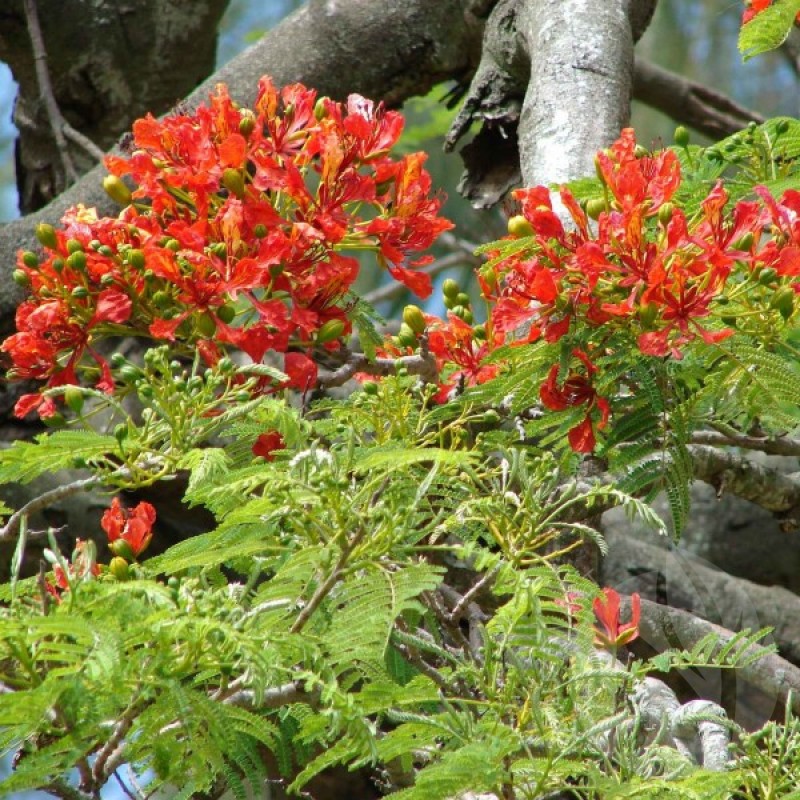
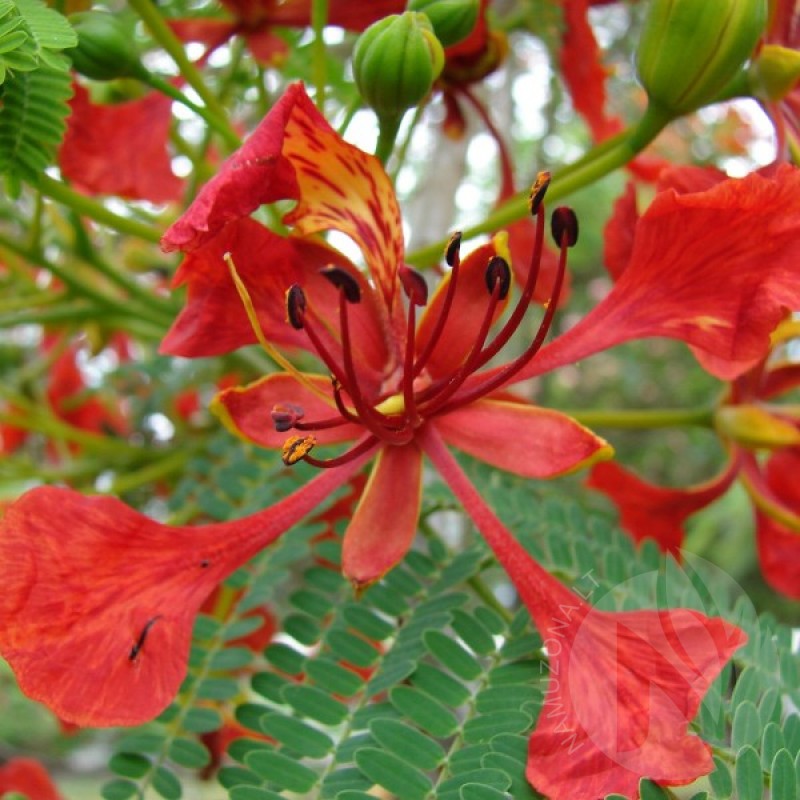
PAY ATTENTION!
All seeds (except SOLD OUT) are available for immediate shipping and will be dispatched within 1-2 business days.
INFORMATION NEEDED? PLEASE CONTACT US NOW!
Tropical tree, but in cooler areas can be cultivated as bonsai or grown in large containers with overwintering inside.
Often called the most beautiful flowering tree in the world, royal poinciana fills its spreading, handsome branches with feathery foliage and flamboyant scarlet-orange blossoms in late spring and early summer. A semi-deciduous tree native to the island of Madagascar, it is drought and salt-tolerant, making it among the quintessential trees for tropical landscapes, rivaled for its fame only by the coconut palm.
Typically without leaves in the dry winter months, the tree buds with the return of warmth and summer rains. The foliage is feathery and finely textured, with bright-green, doubly pinnate leaves – as many as 1000 leaflets making up one of the leaves. Simultaneously with or prior to the emergence of new leaves, the branches blaze with masses of large orange-red flowers with four mushroom-shaped petals and one more that is slightly larger and often speckled with dots of another color. When in bloom, the mounded canopy can be a solid cloud of red, orange or yellow-orange. Large seed pods follow the flowers, which are pollinated by insects and birds.
Royal poinciana's wood is considered brittle and can readily break in strong windstorms, and is seemingly favored by termites. Use this “beyond beautiful” tree as a seaside specimen or space-requiring street tree near the beach or inland. It may also be trained as a bonsai. The natural variety flava is scarce but has golden yellow flowers with the fifth petal marked in red and white.
The royal poinciana must be grow in a well-drained soil that is fertile, near the coast or further inland. It is important to fertilize the tree in very sandy or highly alkaline soils during the growing season. Do not situate this surface-rooting tree too closely to pavement or building foundations. The gray trunk is often quite short at the point of the first large side branches. In fact, the tree attains its most magnificent parasol shape if given full sun with lots of room. In humid tropical regions the tree may retain leaves in winter if it is warm and there is timely rain; however, a marked dry period is needed to ensure the renowned explosive flowering once the rainy season begins. Also note that artificial light, such as urban street lamps, can inhibit the natural formation of flowers on branches illuminated at night.
Information source: www.Learn2Grow.com.
Genus - Delonix
Species - Regia
Common name - Royal Poinciana
Pre-Treatment - Not-required
Hardiness zones - 10 - 15
Height - 20-30' / 6 - 9 m
Spread - 20-40' / 6 - 12 m
Plant type - Tree
Vegetation type - Deciduous
Exposure - Full Sun
Growth rate - Fast
Soil PH - Acidic, Neutral, Alkaline
Soil type - Loam, Sand, Well Drained
Water requirements - Drought Tolerant, Average Wate
Landscape uses - Feature Plant, Shade Trees, Street Trees, Tropical
Bloom season - Late Spring, Early Summer, Summer
Leaf / Flower color - Green, Dark Green / Red, Orange Red
GERMINATION INSTRUCTIONS
Before the soaking, file the seeds with knife or sand paper.
1. Boil water and put the seeds in to it. After a couple of minutes add cold water until the temperature drops to +45C (110F): the water should feel very hot but not burning. Leave the seeds in the water overnight. After 24 hours the membrane covering the seeds peels by itself.
2. Put in moist motting soil and wait 1-2 weeks for seedlings to show.
3. Lightly cover the seeded area with mulch to reduce soil compaction in sun and rain. Water shallow seed lightly and frequently until they sprout. Water deeper seeds slowly and deeply, but do not keep wet or they can rot.
When seeds sprout, encourage deep roots by gradually reducing watering frequency and increasing the amount, to get it down deep around and below roots while letting soil surface dry between soakings.
Sėklos turi labai kietą ir vandeniui sunkiai "įkandamą " kiautą, todėl labai svarbu pirmiausia sėklas šiek tiek pašveisti šlifavimo popieriumi arba pabraižyti aštriu peiliu.
Tada sėklas užpilkite verdančiu vandeniu ir mirkykite 12 valandų tol, kol jos išbrinks. Neišbrinkusias sėklas dar kartą mechaniškai pažeiskite ir vėl pakartokite mirkymą.
Išbrinkusios sėklos yra paruoštos sėjimui.
No questions about this product.


